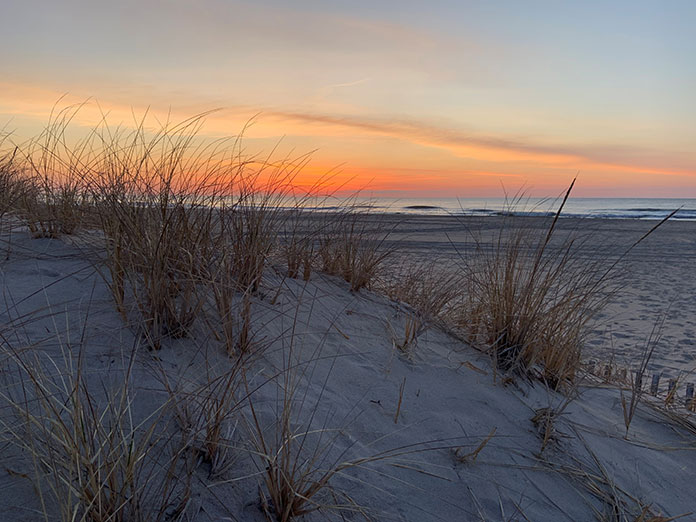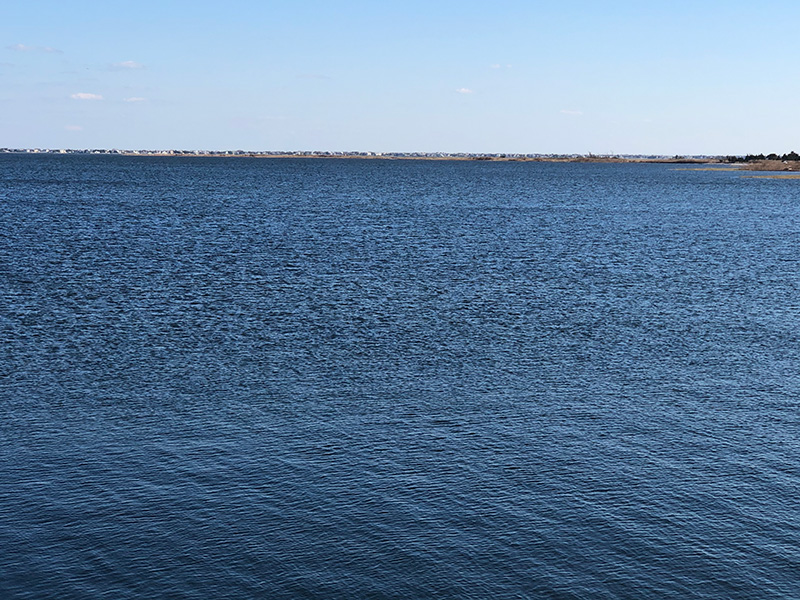
NEW JERSEY – Even in a summer featuring pandemic restrictions which have limited beach attendance at certain beaches, bacteria pollution at ocean and Barnegat Bay beaches remains a health concern, local environmentalists said.
Environment New Jersey Research & Policy Center released a report identifying local beaches that have exceeded the Environmental Protection Agency’s bacteria contamination threshold for safe swimming, using data from 2019.
The solution to the bacteria problem is increased water infrastructure to prevent this pollution, they said. They were joined by Clean Ocean Action, Save Barnegat Bay, the Surfrider Foundation and the Sierra Club.
Last year, bacteria levels at New Jersey beaches indicated that water was potentially unsafe for swimming there on at least one day 73 times, according to the new report Safe for Swimming? by Environment New Jersey Research & Policy Center.
Environment New Jersey Research & Policy Center Director Doug O’Malley said, “one day of a beach closing is too many. We need to keep our beaches safe for swimming by working with shore towns to build the infrastructure that will keep the water clean.”
He added, “the shore is packed this summer and our natural areas have been never been more crowded. In the summer of COVID, let’s commit to practicing social distancing, beating the virus and cleaning up our waters.”
O’Malley added, “now is the time to provide funding to ensure that our waters are always safe for swimming by reducing run-off and sewage pollution.”
To assess beach safety, the group examined whether fecal indicator bacteria levels exceeded the U.S. Environmental Protection Agency’s (EPA) most protective “Beach Action Value,” which is associated with an estimated illness rate of 32 out of every 1,000 swimmers.
Beachwood Beach West in Beachwood and the 25th Street Bay Front Beach in Barnegat Light both had nine exceedances and had bacteria levels above this safety threshold on 50 percent and 43 percent of the days respectively tested last year. The testing was conducted at 222 Ocean and Bay beaches.
Clean Ocean Action Director Cindy Zipf said, “the Jersey Shore’s ocean water quality isn’t perfect, but it has come a long, long way – vastly improving since the late 1980s when hundreds of beaches were closed for weeks on end.”
“Over the years, Clean Ocean Action has worked together with many people at the federal, state, and local levels to successfully identify and stop sources of what we call ‘poo-llution’ into our coastal waterways,” Zipf said.
She added that due to a grant from the NJDEP, Clean Ocean Action, Save Barnegat Bay, and the Marine Academy of Technology and Environmental Science (MATES) “are teaming-up to find and slow the flow of poo-llution in Barnegat Bay, a hot spot highlighted in the study.”
Zipf said, “the truth is, water quality really depends on all of us, and residents can help by getting involved in protecting your local waterway and always collecting your pet’s waste and never leaving it behind.”
Polluted runoff from roads and parking lots, overflowing or failing sewer systems, and farms are common sources of contamination that can put swimmers’ health at risk and lead authorities to close beaches or issue health advisories. Scientists estimate that 57 million instances of people getting sick each year from contact with polluted waters in the U.S.
Beachwood Mayor Ron Roma said, “we are committed to finding and fixing the problems that cause our beach closings. We have expended significant resources with multiple partners to date and will now be partnering with a grant to bring in specially trained dogs to sniff-out any sewer leaks that may be under the ground in the coming year to help locate problem areas.”
Beachwood’s beach is actually on the Toms River, fed by Barnegat Bay. However, since there is little current, bacteria stays longer.

Other beaches in the state that were found potentially unsafe for swimming at least twice last year included those in Brick, Harvey Cedars (Bay Front), Sea Girt, Wildwood, Surf City, Belmar, Long Branch, Somers Point, Seaside Park, Upper Township, Highlands Borough, Neptune, North Wildwood, Sea Bright, Sea Isle City, Wildwood Crest and Cape May.
“Everyone is enjoying the beaches this summer so far, but there is always a threat to the shore. The threat is water pollution. Stormwater runoff and sewage end up in our bays and ocean, closing beaches for sometimes days at a time, New Jersey Sierra Club Director Jeff Tittel said.
He added, “this report once again is a wake-up call that New Jersey needs to do more to protect our coast and bays from chronic pollution, runoff from fertilizers and septics, and old leaky sewer pipes. As temperatures rise and water infrastructure gets older, we’ll see more closed beaches.”
Brick Township Mayor John G. Ducey said, “we must all be aware that, while beautiful, our Barnegat Bay presents unique water quality challenges which require understanding of the implications of fertilizer use and waste management on storm water runoff.”
Ducey added, “we applaud and will continue to work with our local and regional non-profit partners to educate property owners on ways we can improve water quality. At the same time, we call on our federal partners to fully fund water quality improvement initiatives.”
Britta Wenzel, who serves as the executive director of Save Barnegat Bay said, “water quality is critical to the Jersey Shore. Barnegat Bay is an estuary, a combination of fresh water from rivers and salty ocean waters combining. Protecting Barnegat Bay begins in the Pinelands or the headwaters of all rivers, and in our neighboring cities to the north, as pollution from CSOs travel south in our ocean waters and reach the beaches at the shore.”
“We are all connected through water. We must support major investments in water infrastructure improvements if we want to keep our memories alive and our shore economy intact. Swimming, fishing, boating, crabbing, rentals, restaurants and so much more, relies on safe, clean water. Every dollar counts when we invest in water quality, we see the return directly in our local and state economy,” she added.
Surfrider Foundation Mid Atlantic Regional Manager John Weber said, “the ocean beaches are mostly free of problems but it is the bayside beaches where we see high numbers more frequently. We’ve solved certain problems impacting the ocean like dumping and treatment plant outfall pipes.”
He added however that “bay beaches are the recipients of all the water falling on the land around them. We can address that with better infrastructure and low impact development techniques.”






